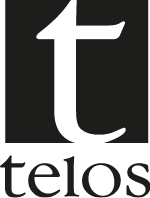The WTO’s transparency challenge edit
Multilateral liberalization has often been described as a bicycle that has to keep moving to maintain stability. Undeniably, the bicycle has come to a standstill: as the Doha Round drags on since 2001 with little result, countries have worked off their liberalization commitments from the Uruguay Round (1986-94) and face few incentives to reform their policies in preparation of new WTO obligations.
Instead of moving forwards, governments are vulnerable to backsliding on liberal policies in their dealing with the global financial and economic crisis. Despite grandiloquent commitments to uphold open trade policies, evidence of creeping protectionism is mounting, such as tariff increases, a growing number of antidumping investigations, emergency subsidy programs with little attention to WTO subsidy and government procurement disciplines, and tighter restrictions on foreign direct investments. The political pressure to resort to protectionist measures will intensify as the economic crisis deepens and more jobs are lost, and the international dynamic of tit-for-tat policies will add its share to make things worse.
In this situation, the Trade Policy Review Mechanism (TPRM) assumes particular importance. It serves ‘the regular collective appreciation and evaluation of the full range of individual Members’ trade policies and practices and their impact on the functioning of the multilateral trading system.’ This mandate sounds promising. But the TPRM that has emerged from the political compromise of the late 1980s and been incorporated into the Uruguay Round agreement has never lived up to the expectations the mandate creates. In the meantime, several important developments have taken place to make reform all the more crucial.
First, Trade Policy Reviews (TPRs) have lost value over time as other sources of information have improved and become more readily available. They include the information provided by the WTO itself (through notifications, the working committees, the Secretariat), by other international organizations ( IMF, World Bank, OECD, APEC), and by nongovernmental actors (NGOs such as the World Economic Forum, academia, commercial intelligence providers). Such sources are often more standardized and thus easier to read and compare, more analytical, and more outspoken. They are stealing the TPRM show.
Second, the unilateral approach to liberalization has become popular. Countries as diverse as the Asian giants China and India, Latin American middle-income countries Mexico and Chile, and developed Australia and New Zealand have opened up on their own initiative. Fostering liberal convictions now has a double, unilateral and multilateral, dividend.
Third, the future trade policy agenda reaches deep behind national borders. Promoting trade in services, removing technical barriers to trade, facilitating foreign direct investment, and introducing competition policy in the WTO – all these areas are less suitable for mercantilist bargaining than traditional tariff cutting, while they depend more strongly on genuine domestic support for open markets.
Fourth, trade policymaking has become more participatory. This domain used to be the reserve of small circles of experts. But business federations, trade unions and a broad array of other non-governmental actors now take interest in and exert influence on trade policies. However, they take little notice of TPRs that are cumbersome to read, clogged with compendium-style information, and relentlessly uncritical.
Hence, the TPRM should be reinvigorated and resolutely aimed at shaping domestic politics. TPRs should focus the attention of domestic constituents on their country’s trade policies and attract media attention. They should make trade policies comparable across countries and time and highlight their trade and welfare effects. In this way, they can convince readers of the benefits of liberal reform and serve as a reference in domestic policy debates.
One reform measure should be to open the process of writing TPRs to public scrutiny and to allow for greater stakeholder participation. Another step in the attempt to transform TPRs from a diplomatic exercise in Geneva into an event in members’ domestic politics could be to present and discuss the TPR in the country under review. To realize these more ambitious objectives, the budget of the Trade Policy Review Division should be substantially increased. Importantly, all recommendations could be realized within the existing mandate of the WTO agreement – and would indeed come much closer to its ambitious wording than current practice.
Reform of the TPRM will neither stop creeping protectionism nor get us any closer to a draft agreement for the Doha Round in 2009. Its promise is to prepare the ground for liberal trade policies in the long run, so that the WTO bicycle can keep its momentum on a gentler downhill slope.
Did you enjoy this article? close





